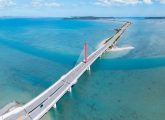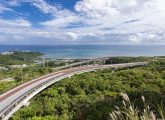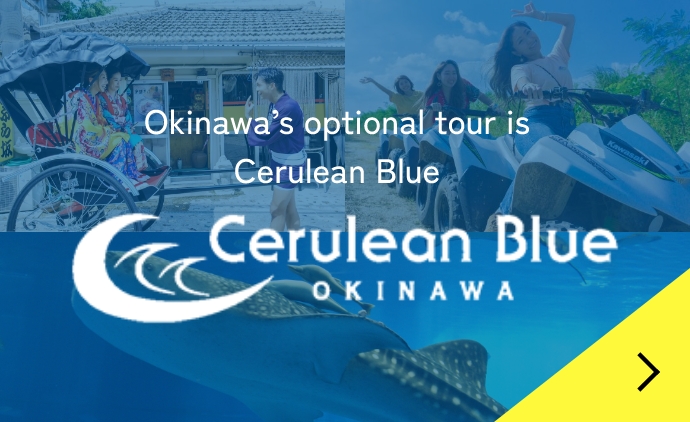tourism 2023.12.03
Beautiful curves! World Heritage Site “Zakimi Castle Ruins”

Writer
木内 清佳
The precision and beauty of the stone masonry of the castle walls and castle gates make it one of the best castles in Okinawa.
Zakimi Castle was built in the early 15th century by Gosamaru, a famous castle builder. Gosamaru was a lord in charge of the Yomitanyama region, and is said to have gained recognition as a castle builder by building castle walls with strength and beautiful curves through ingenuity in stone masonry. Gosamaru lived in Zakimi Castle for 18 years and is said to have supported the royal lineage of the First Shō clan at the time through overseas trade with China and Southeast Asia.。
Aji is a local ruler, equivalent to the mayor of a municipality today.
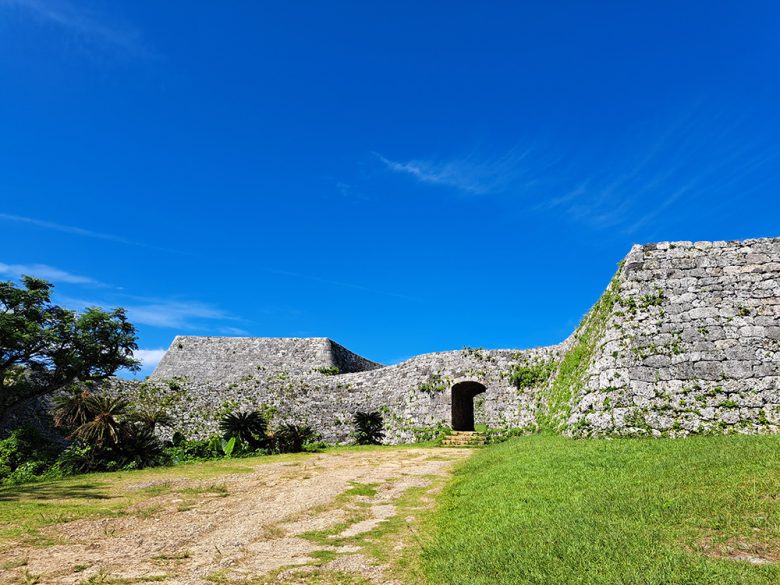
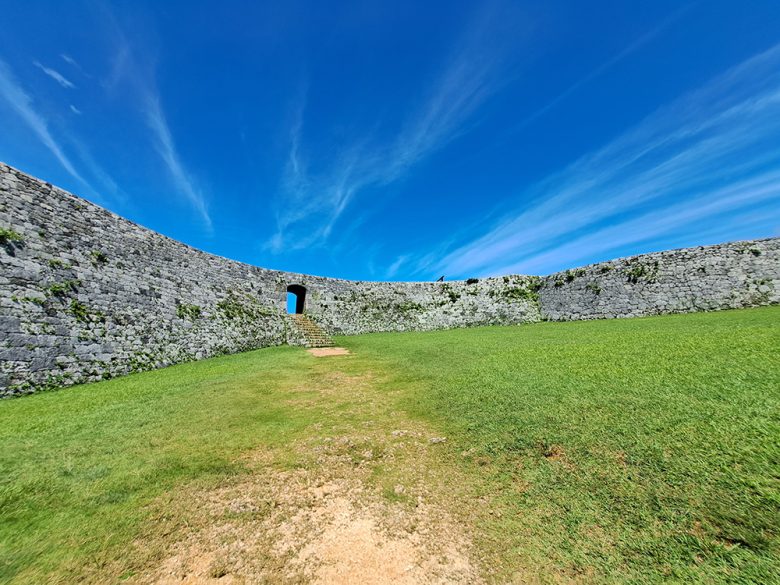
The highlight is the oldest arch gate in Ryukyu and the way the stones are piled up!
The castle is built in the form of two walls, with arch gates built in each of the first and second walls. The arch is inlaid with “wedge stones” that cannot be found in other Gusuku. This is said to be the oldest existing arch stone gate in Okinawa.
Various techniques are used to lay stones on the walls other than the gates, depending on the location, and you can see all of the major masonry techniques of Gusuku in the prefecture. It’s also interesting to pay attention to how they are stacked.
This castle wall, which draws a gentle and elegant curve, has been selected as one of Japan’s 100 Famous Castles.
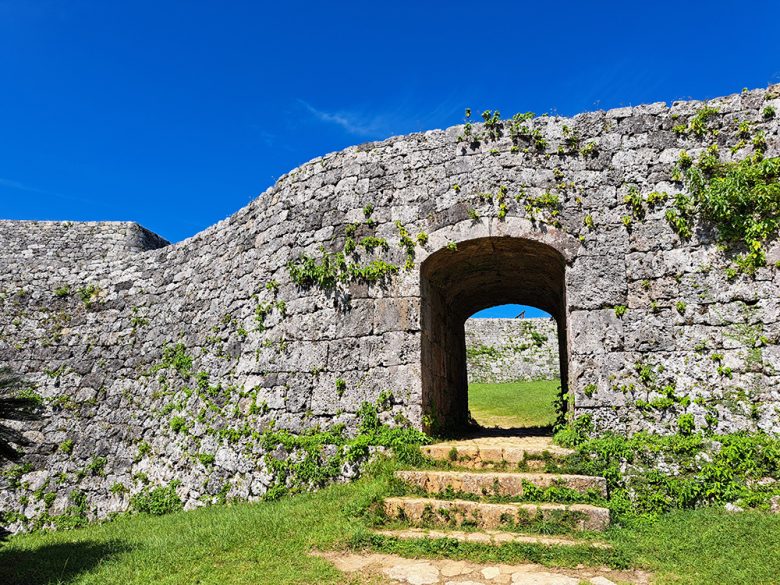
The view from the top of the castle wall makes you feel like the master of the castle!
If you go to the first wall in the back, you can climb the castle wall. The castle walls are thick enough to accommodate about 5 to 6 adults. This castle is located on a hill at an altitude of about 125 meters, and if you stand on the castle walls, you can not only see a panoramic view of Yomitan Village, but also the Kerama Islands and Ie Island in the East China Sea.
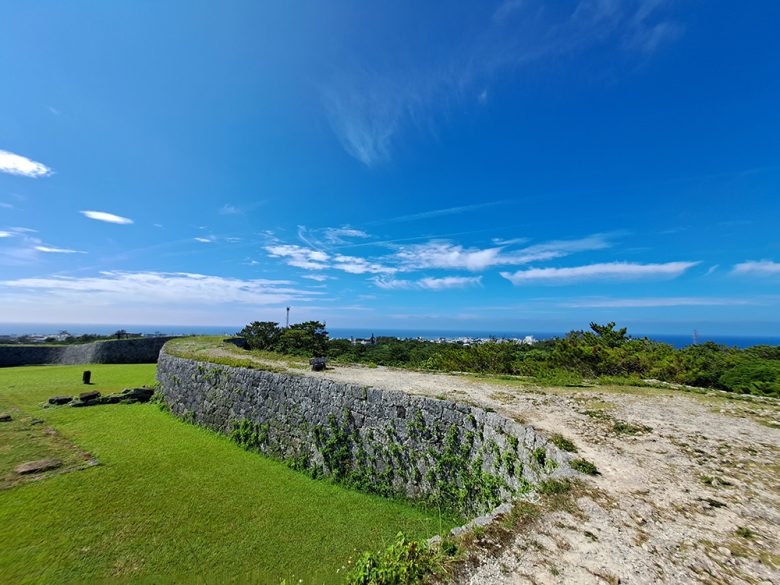
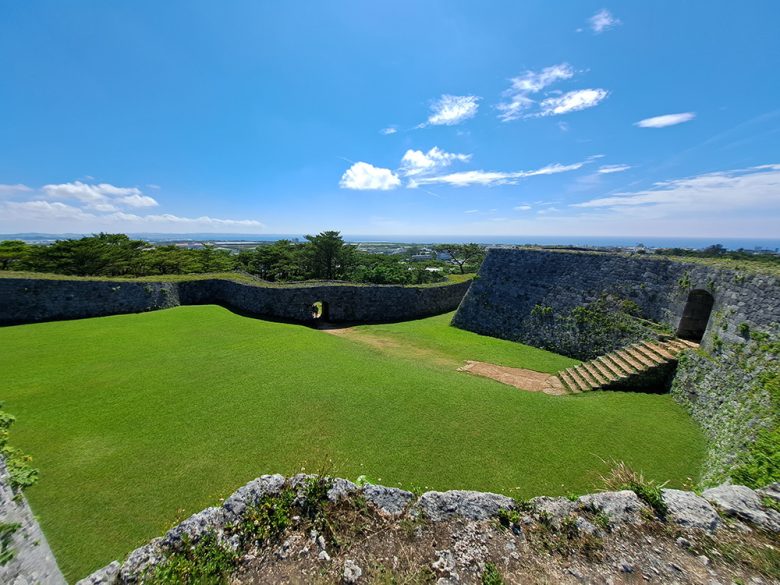
A cultural heritage site representing Okinawa that has been registered as a World Heritage Site
Zakimi Castle Ruins was registered as a World Heritage Site in December 2000 as a “Gusuku and Related Sites of the Ryukyu Kingdom”. The “Gusuku and related heritage sites of the Ryukyu Kingdom” consists of five Gusuku and four related heritage sites, which are considered to be the ruins that represent the Ryukyu Kingdom, which lasted from the 15th to the 19th century.
Please note that smoking is prohibited on the premises as it is registered as a World Heritage Site. There are also no trash cans, so please be sure to take your trash home with you.
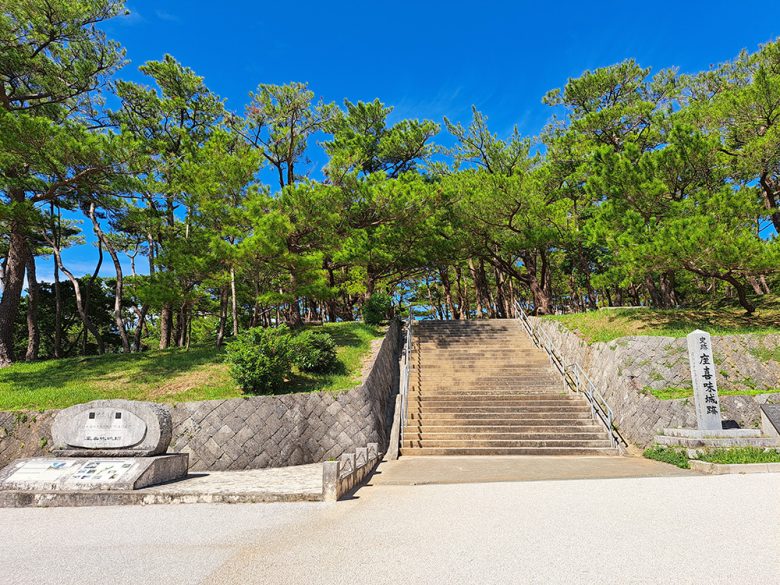
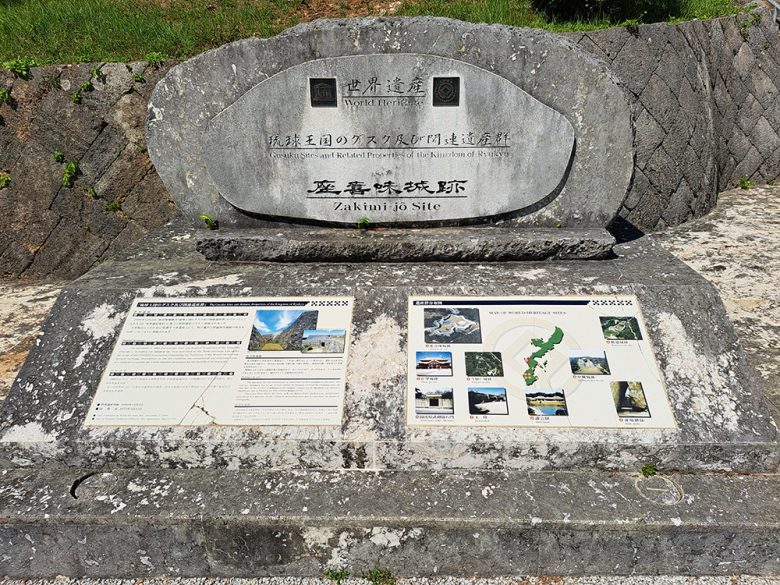
Spreading nature takes you back in time
The promenade is lined with Ryukyu pine trees, providing a comfortable environment even in the middle of summer, as it blocks out the strong sunlight.
In the summer, it’s great to listen to the chorus of cicadas and take a stroll through the park while thinking about history.
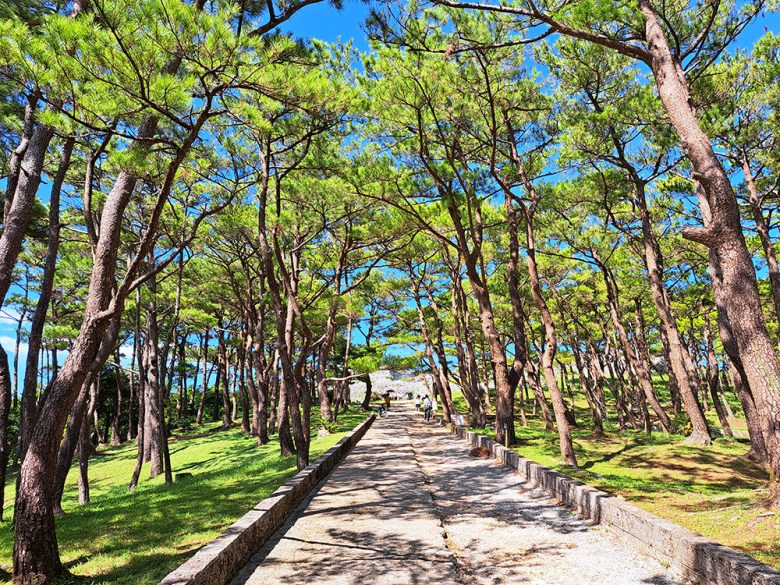
Yuntanza Museum where you can learn about history
In addition to the Zakimi Castle Ruins, Zakimi Castle Park also houses the Yuntanza Museum with the Yomitan Village History and Folklore Museum and Art Museum. The three-story facility has a paid area and an area that can be viewed for free.
The 1st floor exhibition room exhibits the world heritage Zakimi Castle Ruins and the natural and cultural heritage sites cultivated in Yomitan. The 2nd floor exhibition room has exhibits on archeology, folklore, nature, and the Battle of Okinawa, and the 3rd floor is an art museum.
In addition to multilingual pamphlets inside the museum, tablets are also available for rent. You can read about the history of Yomitan Village of the Ryukyu Dynasty to the Taisho and Showa eras in multiple languages using an app linked to the exhibits. There are also services that allow you to view them.
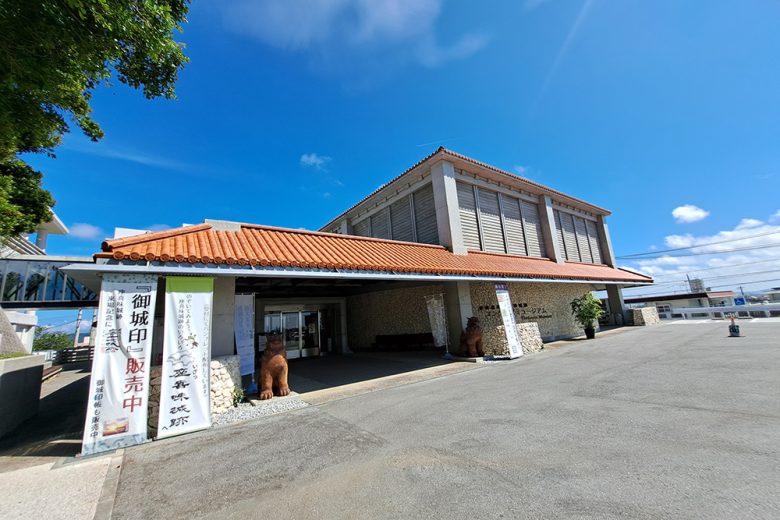
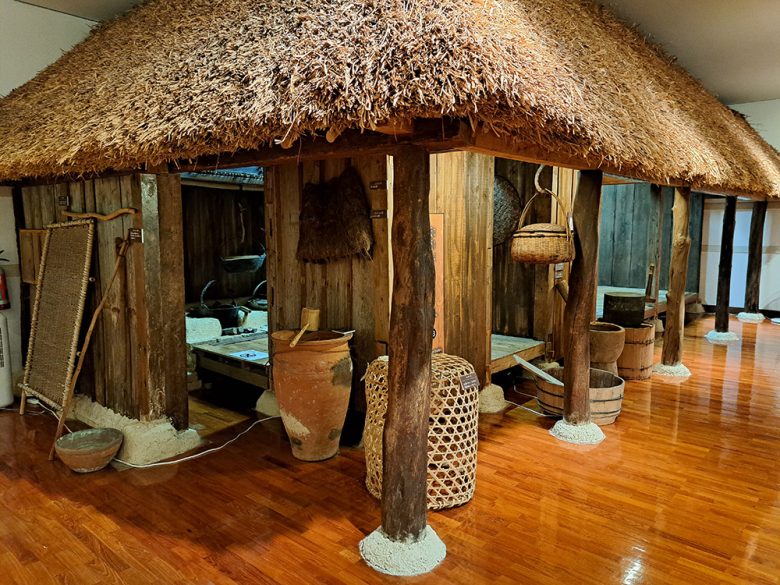
Healing scenery with rich nature
The observation deck near the north parking lot on the opposite side of Yuntanza Museum is also a recommended spot with a great view. It is also good to go there at sunset time when the sun sets over the East China Sea.
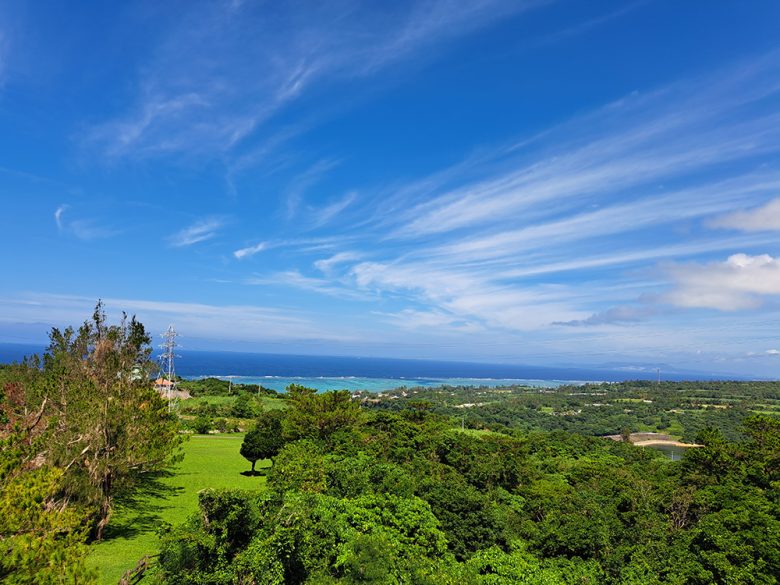
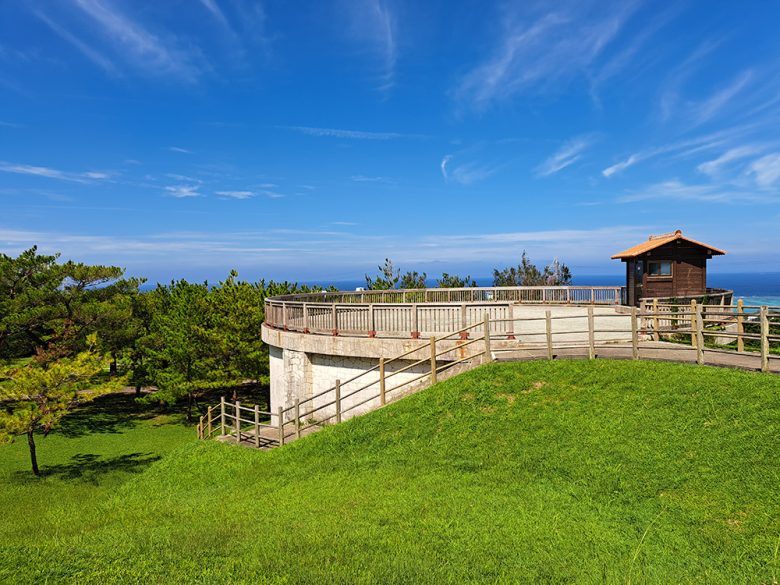
INFORMATION
Museum has free space and paid space
Outside the village Individuals (infants: free / elementary and junior high school students: 300 yen / high school students and older: 500 yen / 65 years old and older: 400 yen)
English, Simplified (China, Singapore, Malaysia), Traditional (Taiwan, Hong Kong), Korean


